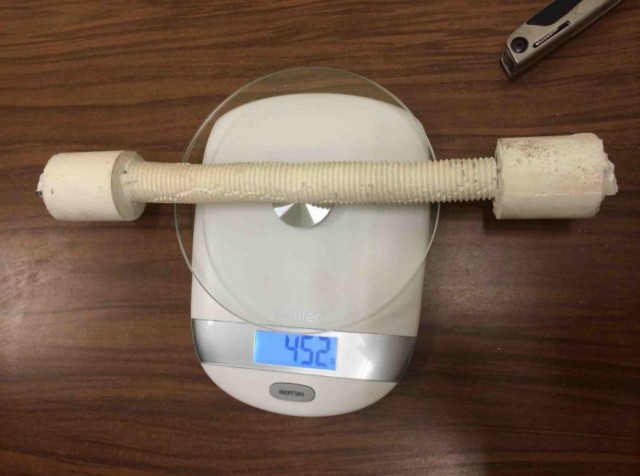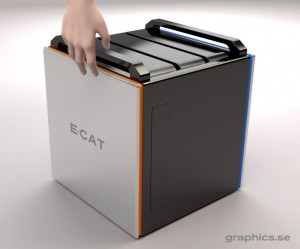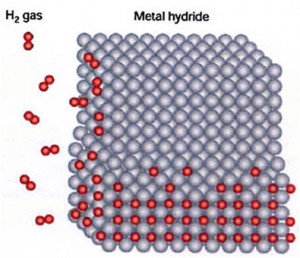Cold Fusion Breakthroughs
Cold fusion reactor verified by third-party researchers, seems to have 1 million times the energy density of gasoline

By Sebastian Anthony
Andrea Rossi’s E-Cat — the device that purports to use cold fusion to generate massive amounts of cheap, green energy — has been verified by third-party researchers, according to a new 54-page report. The researchers observed a small E-Cat over 32 days, where it produced net energy of 1.5 megawatt-hours, or “far more than can be obtained from any known chemical sources in the small reactor volume.” The researchers were also allowed to analyze the fuel before and after the 32-day run, noting that the isotopes in the spent fuel could only have been obtained by “nuclear reactions” — a conclusion that boggles the researchers: “… It is of course very hard to comprehend how these fusion processes can take place in the fuel compound at low energies.”
This new report [PDF] on the E-Cat was carried out by six (reputable) researchers from Italy and Sweden. While the new E-Cat looks very different from previous iterations, the researchers say that it uses the same “hydrogen-loaded nickel” and additives (most notably lithium) as a fuel. The device’s inventor, Andrea Rossi, claims that the E-Cat uses cold fusion — low-energy nuclear reactions, LENR — to fuse nickel and hydrogen atoms into copper, releasing oodles of energy.
The researchers, analyzing the fuel before and after the 32-day burn, note that there is an isotope shift from a “natural” mix of Nickel-58/Nickel-60 to almost entirely Nickel-62 — a reaction that, the researchers say, cannot occur without nuclear reactions (i.e. fusion). The researchers say there is just 1 gram of fuel inside the E-Cat…

New style E-Cat device being weighed

The E-Cat test setup
The researchers are very careful about not actually saying that cold fusion/LENR is the source of the E-Cat’s energy, instead merely saying that an “unknown reaction” is at work. In serious scientific circles, LENR is still a bit of a joke/taboo topic. The paper is actually somewhat comical in this regard: The researchers really try to work out how the E-Cat produces so much darn energy — and they conclude that fusion is the only answer — but then they reel it all back in by adding: “The reaction speculation above should only be considered as an example of reasoning and not a serious conjecture.”
Anyway, now that we’ve got the necessary cynicism/scrutiny out of the way, let’s get down to what everyone’s really interested in: The utterly insane amounts of energy produced by the E-Cat. In the table below you can see some figures from the 32-day test. The most important figures are on the right hand side: a COP (coefficient of performance) of up to 3.74, and net power production of 2,373 watts. Remember that this is a small device that produced these kinds of figures for 32 days straight. Total energy obtained over 32 days was 1.5 MWh.

To put this into perspective, the E-Cat tested by the researchers has an energy density of 1.6×109 Wh/kg and power density of 2.1×106 W/kg. This is orders (plural) of magnitude higher than anything else ever tested — somewhere in the region of 100 times more power than the best supercapacitors, and maybe a million times more energy than gasoline. In the words of the researchers, “These values place the E-Cat beyond any other known conventional source of energy.”

This is what a commercialized E-Cat will apparently look like, when Rossi finally gets around to changing the world.
Obviously, if these third-party findings are to be believed — if the E-Cat really is performing cold fusion — then this is rather exciting. We are talking about an extremely cheap, green, and dense power source that could quite literally change the world.
Before the world can be changed, however, there will now be a very extensive period of scrutiny from the scientific community at large. The previous third-party analysis of the E-Cat device, published in March 2013, was attacked and debunked very rapidly. It seems this new report has been intentionally designed so that there are fewer plot holes and logical leaps. The research paper has reportedly been submitted to the Arxiv pre-print server, with the hope of eventually being published in the Journal of Nuclear Physics.
The next few weeks could be very interesting indeed. According to one report at Sifferkoll, a big bank downloaded the new E-Cat report just minutes after it was made available online — and “oil futures have stayed volatile since.” And of course this morning Glasgow University announced that it would be selling its fossil fuel investments. Hmm…
[size=32]NASA’s cold fusion tech could put a nuclear reactor in every home, car, and plane[/size]

The cold fusion dream lives on: NASA is developing cheap, clean, low-energy nuclear reaction (LENR) technology that could eventually see cars, planes, and homes powered by small, safe nuclear reactors.
When we think of nuclear power, there are usually just two options: fission and fusion. Fission, which creates huge amounts of heat by splitting larger atoms into smaller atoms, is what currently powers every nuclear reactor on Earth. Fusion is the opposite, creating vast amounts of energy by fusing atoms of hydrogen together, but we’re still many years away from large-scale, commercial fusion reactors. (See: 500MW from half a gram of hydrogen: The hunt for fusion power heats up.)
 LENR is absolutely nothing like either fission or fusion. Where fission and fusion are underpinned by strong nuclear force, LENR harnesses power from weak nuclear force — but capturing this energy is difficult. So far, NASA’s best effort involves a nickel lattice and hydrogen ions. The hydrogen ions are sucked into the nickel lattice, and then the lattice is oscillated at a very high frequency (between 5 and 30 terahertz). This oscillation excites the nickel’s electrons, which are forced into the hydrogen ions (protons), forming slow-moving neutrons. The nickel immediately absorbs these neutrons, making it unstable. To regain its stability, the nickel strips a neutron of its electron so that it becomes a proton — a reaction that turns the nickel into copper and creates a lot of energy in the process.
LENR is absolutely nothing like either fission or fusion. Where fission and fusion are underpinned by strong nuclear force, LENR harnesses power from weak nuclear force — but capturing this energy is difficult. So far, NASA’s best effort involves a nickel lattice and hydrogen ions. The hydrogen ions are sucked into the nickel lattice, and then the lattice is oscillated at a very high frequency (between 5 and 30 terahertz). This oscillation excites the nickel’s electrons, which are forced into the hydrogen ions (protons), forming slow-moving neutrons. The nickel immediately absorbs these neutrons, making it unstable. To regain its stability, the nickel strips a neutron of its electron so that it becomes a proton — a reaction that turns the nickel into copper and creates a lot of energy in the process.The key to LENR’s cleanliness and safety seems to be the slow-moving neutrons. Whereas fission creates fast neutrons (neutrons with energies over 1 megaelectron volt), LENR utilizes neutrons with an energy below 1eV — less than a millionth of the energy of a fast neutron. Whereas fast neutrons create one hell of a mess when they collide with the nuclei of other atoms, LENR’s slow neutrons don’t generate ionizing radiation or radioactive waste. It is because of this sedate gentility that LENR lends itself very well to vehicular and at-home nuclear reactors that provide both heat and electricity.
According to NASA, 1% of the world’s nickel production could meet the world’s energy needs, at a quarter of the cost of coal. NASA also mentions, almost as an aside, that the lattice could be formed of carbon instead of nickel, with the nuclear reaction turning carbon into nitrogen. “You’re not sequestering carbon, you’re totally removing carbon from the system,” says Joseph Zawodny, a NASA scientist involved with the work on LENR.
So why don’t we have LENR reactors yet? Just like fusion, it is proving hard to build a LENR system that produces more energy than the energy required to begin the reaction. In this case, NASA says that the 5-30THz frequency required to oscillate the nickel lattice is hard to efficiently produce. As we’ve reported over the last couple of years, though, strong advances are being made in the generation and control of terahertz radiation. Other labs outside of NASA are working on cold fusion and LENR, too: “Several labs have blown up studying LENR and windows have melted,” says NASA scientist Dennis Bushnell, proving that “when the conditions are ‘right’ prodigious amounts of energy can be produced and released.”
I think it’s still fairly safe to say that the immediate future of power generation, and meeting humanity’s burgeoning energy needs, lies in fission and fusion. But who knows: With LENR, maybe there’s hope for cold fusion yet.
From Extreme Tech @ http://www.extremetech.com/extreme/191754-cold-fusion-reactor-verified-by-third-party-researchers-seems-to-have-1-million-times-the-energy-density-of-gasoline and http://www.extremetech.com/extreme/149090-nasas-cold-fusion-tech-could-put-a-nuclear-reactor-in-every-home-car-and-plane
For more information about cold fusion see [url=http://nexusilluminati.blogspot.com/search/label/cold fusion]http://nexusilluminati.blogspot.com/search/label/cold%20fusion[/url]
Thanks to: http://nexusilluminati.blogspot.com






 Sat Mar 23, 2024 11:33 pm by globalturbo
Sat Mar 23, 2024 11:33 pm by globalturbo

